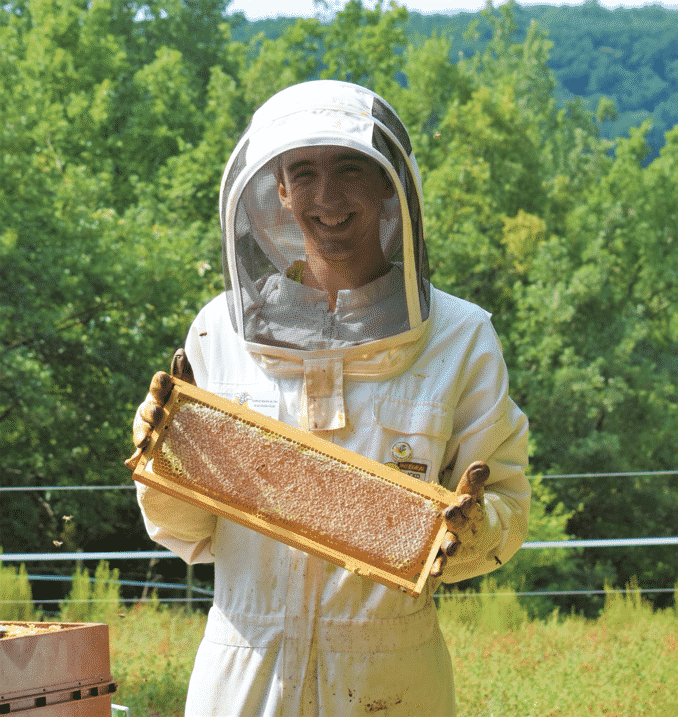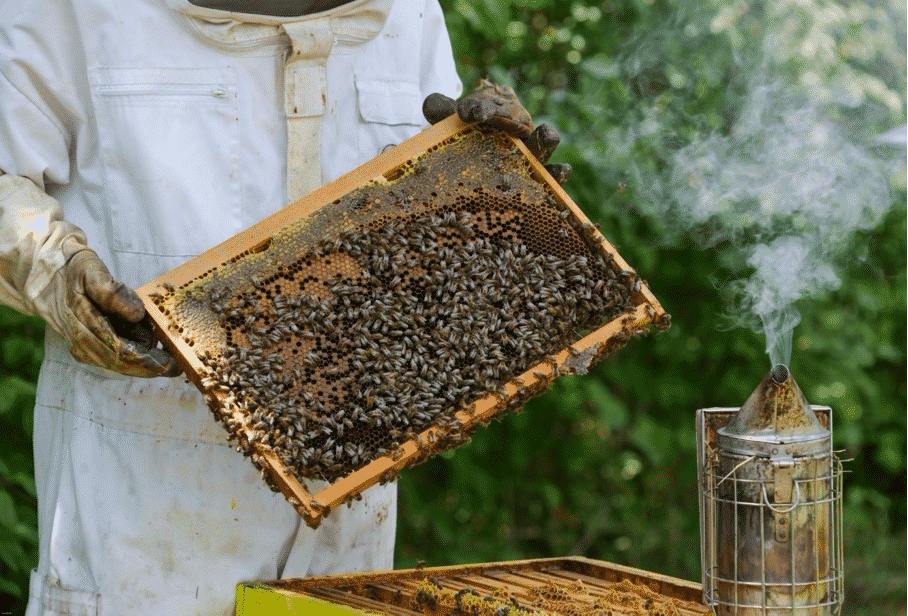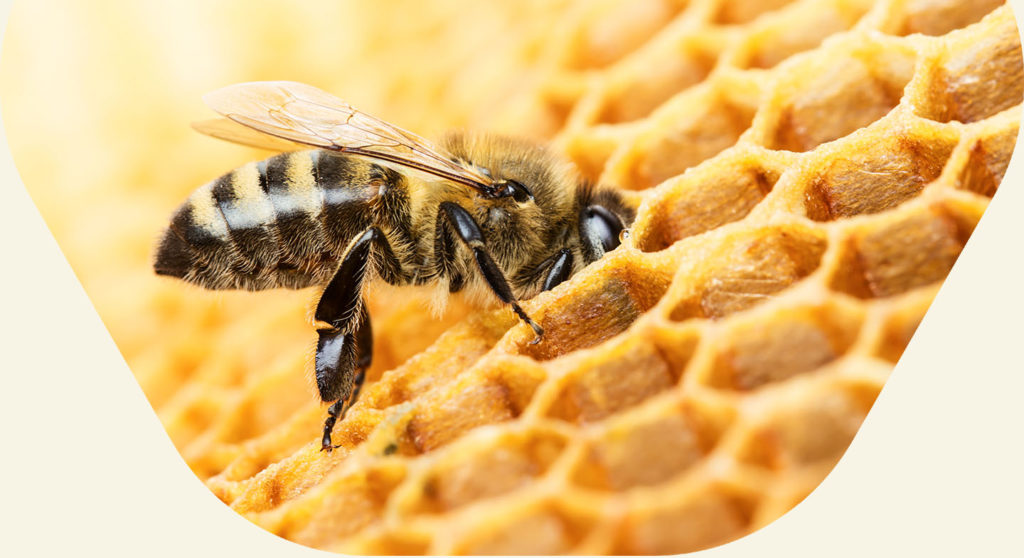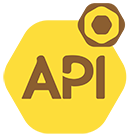API of the Month
Mathieu Domecq
Editor-in-chief of the API blog of the month
This month is a transition period for bees. Winter is coming to an end and spring is giving us a fresh start. On the agenda in your API blog: all my tips on how to start the season.
It’s not uncommon at this time to see a few foragers going on their cleansing flight or foraging the first flowers (clover, fruit trees, mimosa, etc.). This will allow the bees to recharge their energy before the first spring flowers bloom, followed by the first swarms!

The first signs of spring
In most of our regions, temperatures are gradually rising, indicating that winter is almost behind us. With an average temperature of 12–15°C in the daytime, bees are beginning to visit early blooms such as mimosa and fruit trees. However, we should not forget that these temperatures drop significantly at night, to between 2 and 5°C, so frosts can still be expected.
Queens start laying in March. Continue to monitor the reserves as colonies may die of famine.
The best way is to weigh them regularly (by hand) and restock them. One last piece of Apifonda® candy (about 1 kg) should suffice. In larger hives and in the regions further south, you can pour in 2–3 litres of syrup. The syrup will stimulate the queen’s laying. The more the queen lays, the more food the colony will consume. Future newborns will need to be well fed!
On a sunny day, beekeepers will be able to make a first spring visit to check this laying. Ideally, this will require a temperature of at least 16 or 18°C outdoors and no wind.
A colony that brings in pollen is a colony that has a queen laying! Similarly, when you touch the frame cover with the palm of your hand, if the beehive feels warm, this means that activity has resumed and the queen is laying. Moisture can also be seen on the frame cover, which indicates the same thing.
However, you will not be able to get all the frames out on this visit. Keep it brief, and you can potentially plan a division or install a super soon. This can start from the end of March.
Preparing for your visit
To get the season off to a good start, make sure you have all the tools you need: clothes, gloves, boots, smoker, dry fuel, working lighter, and a clean hive tool.
You can identify the beehives that work hard and those that move less. Remember to record your observations in your logbook (mandatory breeding record).
If you can, start with the strongest hive and end with the weakest. If the weakest is unwell, this will avoid contaminating the others. Some hives will have a slower start, but that doesn’t mean they will have the worst harvests.
Light your smoker and get it working properly. Then put on all your equipment. When you are by the beehive, use the smoker in front of the entrances and remove the roof. Take off the frame cover, adding a bit more smoke to warn and chase the bees away. If bees remain on the frame cover, do not knock them onto the ground. It’s fine to leave them on it.

What should you look out for?
Case 1: Grouped brood, properly capped, etc. Everything is OK!
Case 2: Brood in a mosaic. Queen has a problem and needs to be replaced.
Case 3: Capped brood with torn cappings, ropy larvae. Undoubtedly American foulbrood. Close the beehive, disinfect the equipment, and contact a Beekeeping Health Technician in your area.
Case 4: White and liquid larvae. Probably European foulbrood due to lack of pollen.
Case 5: Mycosis, hive interior too wet. Change the location and plan to replace the queen.
How can you find the queen easily?
If your queen is unmarked and you’re struggling to find her among all the other bees, there are two ways to overcome this.
This should be done after the beginning of April.
Radical method:
Take all the brood frames out of the beehive and position them on a frame holder (a handy tool). Place a frameless beehive super or second empty body on the body of your hive with a queen excluder grid in between. Shake the frames one by one to make all the bees fall out. Smoke at the same time to encourage them to descend. The queen should stay on the queen excluder alone.
Take the opportunity to mark her and put her back in the body with all the frames.
Gentle method:
Quickly take out the brood frames where the cluster is. As soon as you have a frame with an open brood and young larvae, that means there are eggs. Look closely and the queen should be there. She will be a little longer, with large, more yellow legs compared to the other bees, and wings along the abdomen. Bees should surround her to protect her. You’ll see her running fast on the frames, after a little while – she’s looking to hide.
As soon as you start opening your beehives, don’t forget to take photos and we’ll post them on our website from social media channels with the hashtag: #apifonda #apiinvert!
We’re back next month on your API blog with your faithful partner, Les Ruchers De Mathieu!

LES RUCHERS DE MATHIEU
Honey & Beekeeping Shop
Photos ©lesruchersdemathieu


